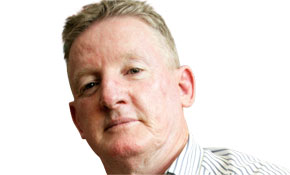
This year is the UN Year of the Forest. Through its use of paper, the printing industry has a link to forestry in almost every region of the world. Paper made in Europe is manufactured from wood fibre sourced from Scandinavia, Russia, Brazil, Chile and Asia. Paper from Asia is made from wood that comes from Asia, Australia, New Zealand, Chile, Europe and North America.
The Year of the Forest will turn the spotlight on the concerns many people have about the world’s forestry. While the most attention will be focused on places such as China, Indonesia and South America, regions such as the US, New Zealand, Europe and Australia also have major forestry issues to deal with. In the US, more than 3,000 hectares of land is cleared every minute to make way for shopping centres, housing and car parks. In New Zealand, forests are being changed into dairy regions as dairy becomes more profitable to land owners. Since European settlement, Australia’s forest cover has gone from 39% of the nation to now 21%.
The lost of forestry is felt in many ways. The release of carbon dioxide into the atmosphere has been a major point of discussion over recent years, especially since the release of the Stern Review into the Economics of Climate Change. When land is cleared to grow crops such as soy, corn, wheat or graze cattle or sheep, there is a significant release of CO2 into the atmosphere. When land is cleared but replaced with a forest, the impact is less significant.
As forestry is cleared, there is also an inevitable disruption to existing human settlements. When I was a kid, the land near my family’s house was surrounded by forest. Now it is a shopping centre and housing. In the developing parts of the world, the disruption to human society can be more painful.
During the course of the Year of the Forest, I have been invited to work on a research study in central Sumatra to explore how the economic exploitation of forestry resources in Indonesia is affecting the remote indigenous people who live in the deep forests. During each visit, I will be spending a week living with the people, working with them each day seeking to determine how their lifestyle has changed over the past 20 years as Indonesia has seen rapid development.
Indonesia continues to develop economically. At the same time, its population is projected to hit 300 million people by 2050. The pressure on forest and human settlement will continue. The study will also look at how remote tribes will be impacted in the future.
The pulp and paper industry in the Asian basin is growing more rapidly than any other part of the world. Magazines, newspapers, packaging, tissue and office paper are only going to grow in volume as economic development, literacy and population increases. In Europe and North America, these paper products are declining particularly as population growth stagnates and economic activity is slow.
Phillip Lawrence spent many years working is a consultant who specialises in print and the environment. His current Phd research project is the ‘Political, Economic and Social Barriers and Incentives to Ecological Modernisation of the Indonesian Economy’.
Comment below to have your say on this story.
If you have a news story or tip-off, get in touch at editorial@sprinter.com.au.
Sign up to the Sprinter newsletter
